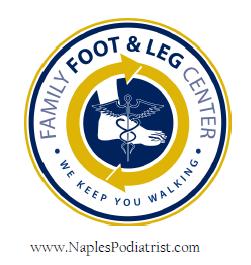
Example of a MRSA infection started as a "rug burn" with this gentleman rough housing with his dog.
Many patients know about how important sunblock is to avoid cancer from the sun. However, most primary care doctors and even some dermatologists may miss looking at skin on the foot. Numerous times each year, we play a role in the diagnosis of skin disorders from biopsies of lesions on the foot and leg. Each lesion that the skin creates will tell a small story as to the inner health of each patient. And even if a lesion is not painful, or is located somewhere you are not usually able to look at, it can be something quite problematic.
We condone the biopsy of any lesion that changes colors, bleeds, or looks different than other lesions on your body. This may include open lesions, pigmented lesions, blistering lesions, and even rashes. The skin only has several ways to show a clinician that something is wrong. That means that thousands of disease processes can only be shown by skin in less than 10 ways. That is a tough thing to diagnose without a definitive biopsy. Most dermatologists require yearly skin exams for anyone with a prior squamous or basal cell carcinoma. And melanoma should be checked for at least 2x yearly. Lesions of the foot and ankle are often found by a foot and ankle surgeon prior to most other specialists or general practitioners, and it is imperitive that a biopsy be performed.
Lesions like the above can actually be a multitude of pathologies being represented by a simple rash. In this case tinea pedis was the diagnosis initially. After 2 months of topical therapy it was later diagnosed with a biopsy as a squamous cell carcinoma (skin cancer).
This is a common presentation of a plantar wart. This is also important to send to a pathologist if they are excised as this may also have several other more aggressive variations of melanomas which can mimic this otherwise harmless viral skin infection.
Any lesion that you are unsure of should get checked by a doctor, whether that is your foot and ankle surgeon, general practitioner, or dermatologist or other specialist. No lesion is too small, or insignificant to investigate.









